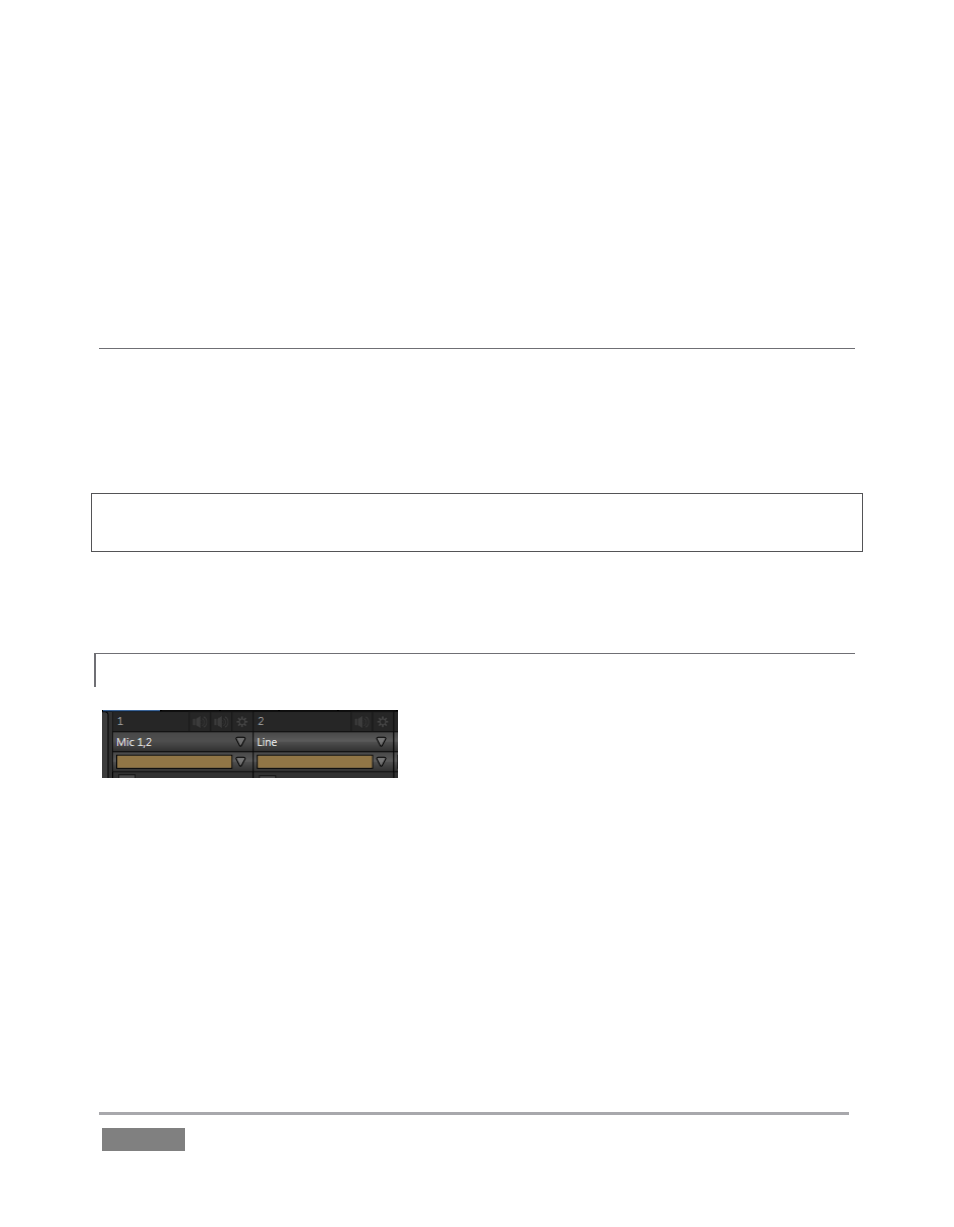Audio groups – NewTek TriCaster 855 User Manual
Page 234

Page | 218
As mentioned earlier, the default calibration used for the VU scale depends on the source type.
Mic and Line sources are normally displayed using the traditional dBVU scale, while in other
cases a dBFS scale is shown by default.
Click the downward-pointing triangle next to the label above the VU scale for any source control
group to manually choose a different VU scale calibration option.
AUDIO LEVELS
TriCaster’s analog audio conforms to SMPTE RP-155. The maximum input/output level is +24
dBu. Nominal input level is +4 dBu (-20dB FS), and the sample rate is 96 kHz. Levels above 0dB
are shown in red in the VU meters, to caution you that overly high levels can result in clipping in
recordings.
Hint: An error message appears in the Status Bar above the main Program output monitor to
warn you if clipping occurs – see Section 6.5.1.
See also Section 13.4, Advanced Audio Configuration, and the heading Audio Headroom in
Section 16.1.1.
AUDIO GROUPS
13.1.5
Audio control panels for TriCaster EXTREME sources
(both internal and external) have a drop-down Group
menu that allows you to link different audio sources
together. This allows you to assign individual sources to
groups identified by color.
Audio Groups are especially useful in two respects:
First, Audio Groups are very useful in combination with TriCaster’s Audio Follow Video
feature (see Section 13.1.4). Consider a typical scenario:
o Two participants are behind a sports desk. Cameras 1, 2 and 3 are left, center
and right views, and there are individual close up cameras as well – 4 and 5.
o An external audio mixer is connected to TriCaster at Audio Input 1.
o Video clips will be played back from the DDR on demand.
Figure 215
